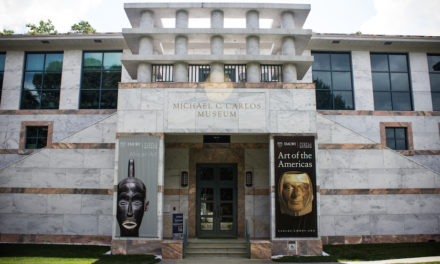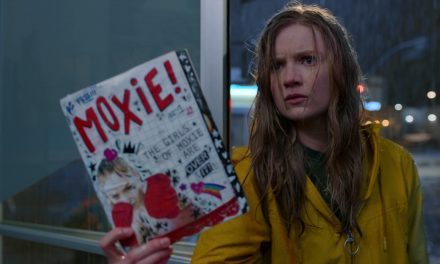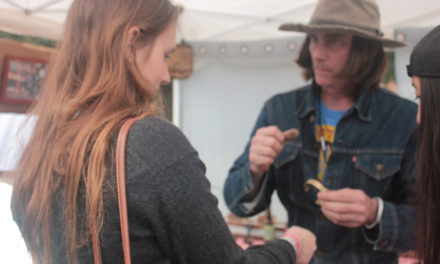As an art history major, I’m often asked why I chose a field with few lucrative job opportunities, but the IDEAS Week 2021 Keynote Lecture with Fahamu Pecou (17G, 18G) and Doug Shipman (95C) provided a reason. Shipman, former CEO of the Woodruff Arts Center, noted “the power of understanding history has never been higher.” When facing political and social turmoil, we need only turn to history to figure out what to do, or what not to do. This is why I study art history. The past is not meant to be copied, but to learn from and to allow us to create a different future.
The Feb. 22 keynote discussion between Pecou and Shipman focused on social action, art and museums as they explored the impact of history and its use in artistic institutions. Pecou and Shipman, both Emory alumni, tied their discussion to the greater Atlanta area and Emory’s art community.
Pecou, an interdisciplinary artist and scholar, spoke first about his work as the founder of the African Diaspora Art Museum of Atlanta (ADAMA), which he described as both a social justice and arts initiative. ADAMA was developed three and a half years ago in response to a conversation Pecou had with a friend concerning the issues facing Black artists in Atlanta. He wanted to address the lack of diversity within cultural and institutional offerings in Atlanta, concerns of erasure due to gentrification in the inner city and lack of accessibility to art. Despite being an avid museumgoer, similar issues of accessibility and diversity persist in these institutions, making me value the way Pecou responded to the gaps in arts and culture.
ADAMA not only responds to general institutional demands for museums, but also the needs of the Black community in Atlanta and beyond. Pecou emphasized how ADAMA thinks about the contributions of the broader African diaspora and the diverse communities of Black people that reside all across Atlanta by recognizing that Blackness and Black identity are not monolithic or homogenous.
The recent calls for social justice in 2020 pushed museums to recognize their inhospitality toward Black, Indigenous and people of color (BIPOC), which Pecou understood way before last year. In the founding of ADAMA, Pecou was intentional about reorienting the experience of Black people in artistic institutions by creating a space that reflects the multidimensional, lived experiences of BIPOC and not those of their white oppressors. Shipman equated this to the creation of Yad Vashem, the World Holocaust Remembrance Center in Jerusalem. When rethinking the museum, designer Moshe Safdie wanted to focus on Jewish stories of remembrance, survival and resilience, not on the German story of the Nazi party’s rise to power. By situating the narrative to center around Jewish strength and experiences, the museum is capable of projecting a brighter future, not just simply retelling the past. Both the ADAMA and Yad Vashem fulfill the truest purpose of museums: using the past as a building block for a diverse and representative future.
This people-focused mentality is also what enlivens the art objects in the ADAMA, and it breaks the traditional, static mold of Eurocentric museums. This is a new wave of museum conception that I believe other global museums should follow, as the current generation of social activists and art consumers have demanded these spaces break institutional norms to meet the needs of the art and the viewers.
Pecou references one of Cesar A. Cruz’s quotes to highlight this new role of museums: “Art should comfort the disturbed and disturb the comforted.”
Conventionally, museums have done the opposite — appease the comforted and ensure nobody is offended or made to check their complicity in social ills. This is no longer what the goal of museums should be or what the future of museums will be. Pecou explains that uncomfortable material is what pushes and challenges us to learn as visitors in a museum, and both educational and artistic institutions should create space for productive growth.
When asked to leave the audience with one last thing, a seed to plant, Pecou concluded with what appears to be his favorite mode of important messaging: a quote.
As Frederick Douglass would often charge his followers to do, “Agitate, agitate, agitate.” Despite being 8 p.m. on a Monday, the lecture left me ready to agitate and transform the oppressive systems of artistic institutions to form a brighter and more diverse future in which all arts, identities, histories and perspectives can be displayed.
Zimra Chickering (24C) is a born and raised Chicagoan who studies art history and nutrition science. She is also a student docent for the Michael C. Carlos Museum, Woodruff JEDI Fellow, educational committee chair for Slow Food Emory, and Xocolatl: Small Batch Chocolate employee. Zimra loves cooking, visiting art museums, photography, doing Muay Thai, drinking coffee, and grocery shopping. She uses writing as an outlet to reflect upon issues and oppurtunities within artistic institutions, and the unique ways in which food and art can act as communicators of culture.







